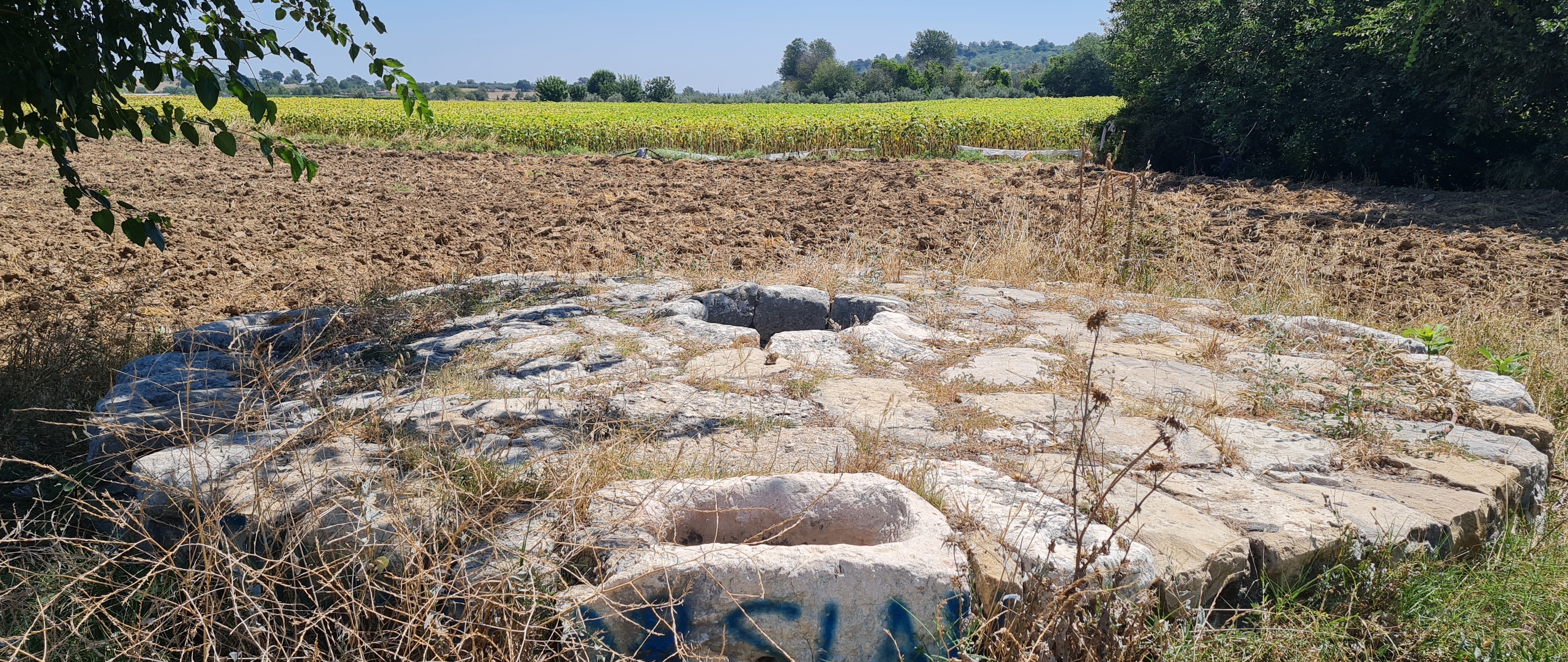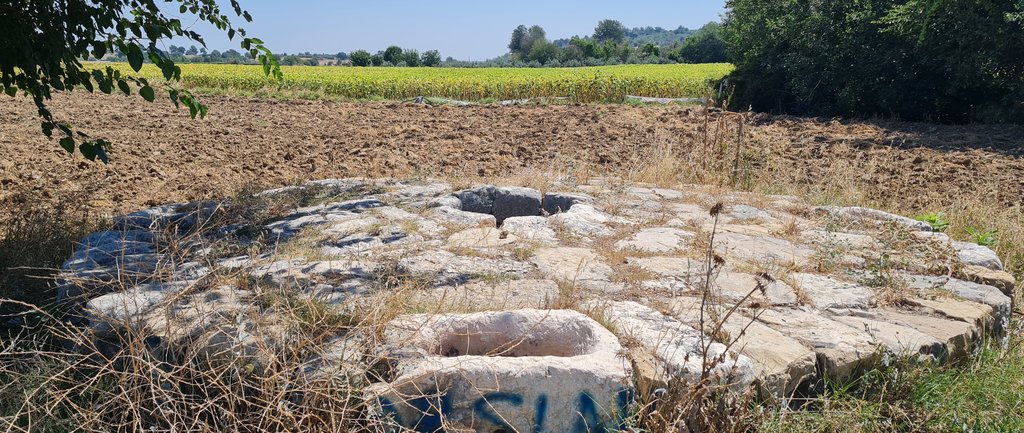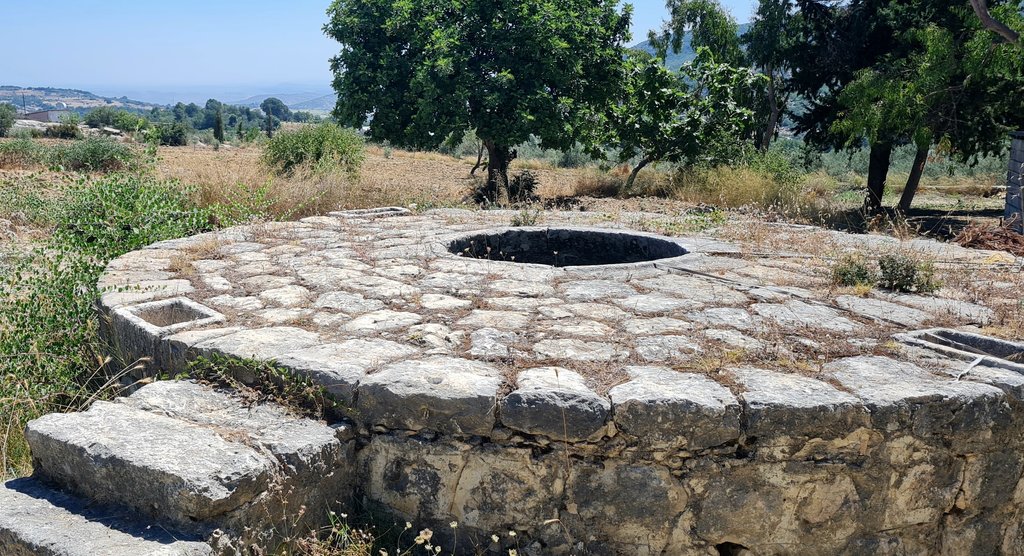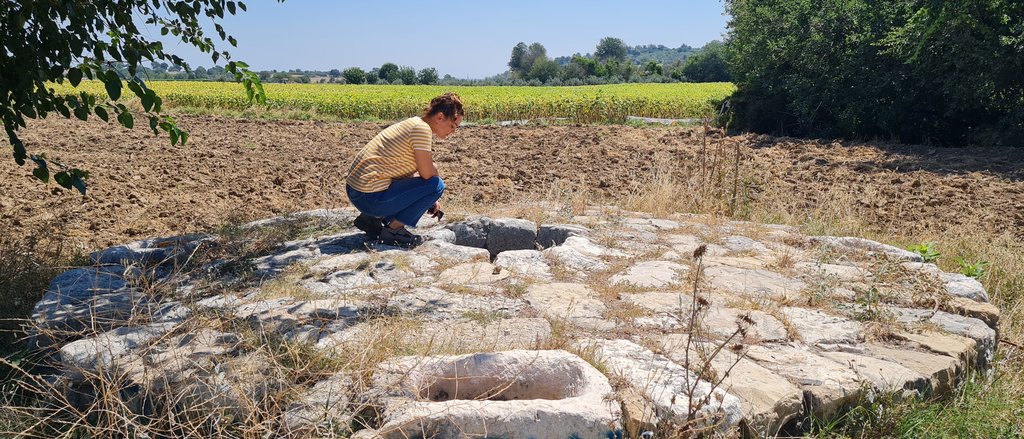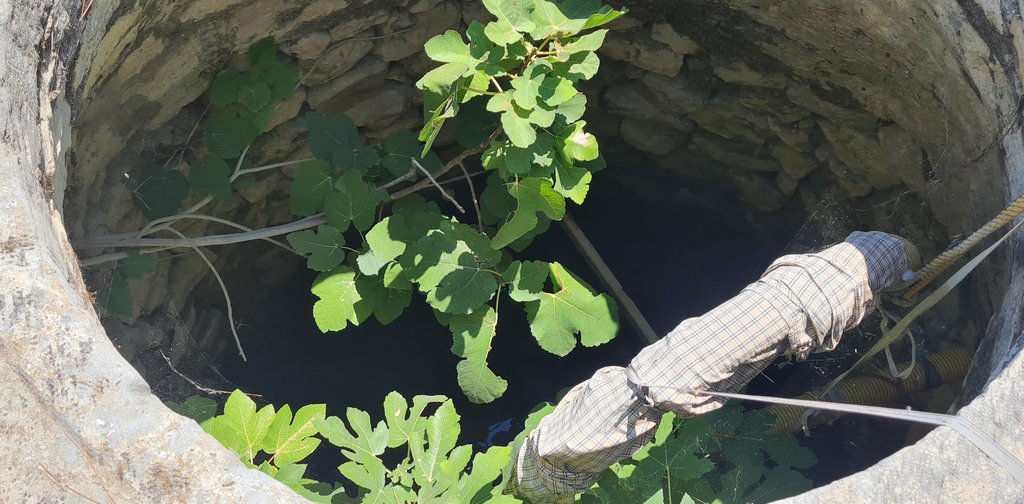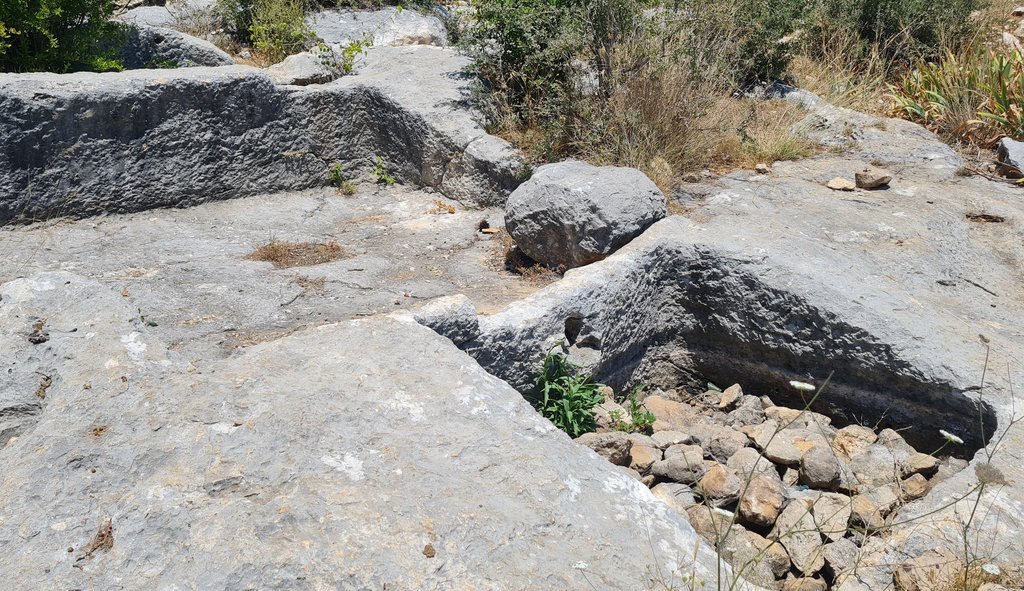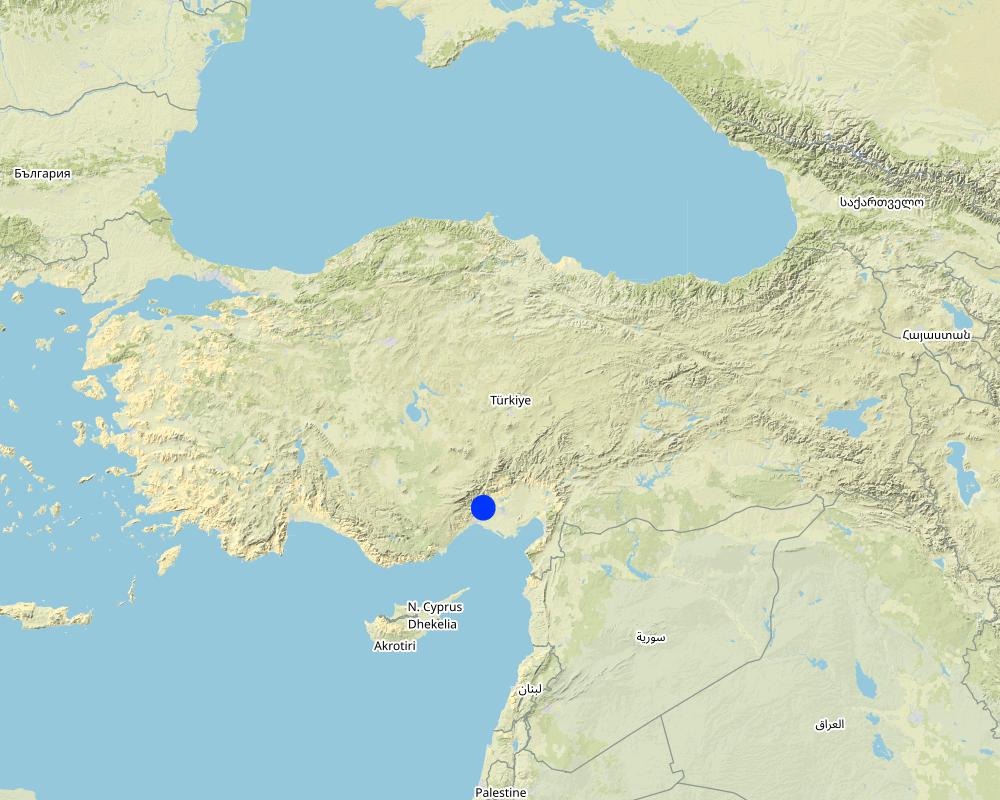Traditional Cisterns [Türkiye]
- Creation:
- Update:
- Compiler: Erhan Akca
- Editor: –
- Reviewers: William Critchley, Rima Mekdaschi Studer
Sarnıç
technologies_6397 - Türkiye
View sections
Expand all Collapse all1. General information
1.2 Contact details of resource persons and institutions involved in the assessment and documentation of the Technology
Key resource person(s)
Mayor:
Bozdogan Haluk
Municipality of Tarsus
Türkiye
co-compiler:
Polat Osman
Municipality of Tarsus
Türkiye
SLM specialist:
Name of the institution(s) which facilitated the documentation/ evaluation of the Technology (if relevant)
Municipality of Tarsus (Municipality of Tarsus) - Türkiye1.3 Conditions regarding the use of data documented through WOCAT
The compiler and key resource person(s) accept the conditions regarding the use of data documented through WOCAT:
Yes
1.4 Declaration on sustainability of the described Technology
Is the Technology described here problematic with regard to land degradation, so that it cannot be declared a sustainable land management technology?
No
2. Description of the SLM Technology
2.1 Short description of the Technology
Definition of the Technology:
Cisterns are water collection structures which form part of a cultural heritage dating back some 2000 years. While cisterns are commonly used to store drinking water, in the sloping fields of Tarsus they serve as a form of water insurance structure for orchards during dry periods.
2.2 Detailed description of the Technology
Description:
People have lived in Tarsus in the Northern Mediterranean Basin since the Neolithic period, and from that time they have modified their environment by constructing terraces to safeguard against erosion and cisterns to store water. Cisterns were constructed for two purposes: cisterns next to homes were designed for drinking water, and the cisterns in the fields were intended to supply vital supplementary irrigation to Mediterranean crops of figs, carobs, vines, and olives during the driest months of July and August. In the summer, a normal-sized cistern with a water volume of 150 cubic metres (150 tonnes) can supply water to a 1-hectare fig (150 tree.ha-1) or olive orchard (200 tree.ha-1) that are traditionally planted on a slightly inclined field (3-5% slope).
The historical field cisterns, which were built using roman cement to reinforce locally available hard limestone, have an average depth of 14 metres and a maximum diameter of 4 metres, narrowing towards the top like the neck of a bottle. One of the most important features is the design that keeps the water surface at about 2-3 meters below the intake hole. By making sure the water in the reservoirs does not receive sunlight, it is believed that the growth of algae and bacteria would be prevented in the cistern.
The Mediterranean climate forms a home for drought-tolerant crops like figs, grapes, olives and carob. However, by supplying small amounts of water to plants, such as one or two buckets, throughout the driest months of the year, particularly July and August, yields can be significantly increased. Cisterns are also utilized to provide sheep and goats, which have been farmed in the region for a very long time, with water for drinking.
Maintenance is needed to repair structural damage, which can be brought about by shifting stones or weakening of the cement. Additionally, the interior has to be cleaned because it may have been partially filled with stones and branches. Furthermore, certain plants must not be permitted to grow close to the cisterns, particularly figs, as their roots can penetrate the stone and undermine the framework.
Farmers continue to favor the technique since the frequency of droughts in the Mediterranean area is increasing. However, because the maintenance of the cisterns exceeds farmers' capabilities, they request, and receive, repair and cleaning assistance from the municipality.
2.3 Photos of the Technology
2.5 Country/ region/ locations where the Technology has been applied and which are covered by this assessment
Country:
Türkiye
Region/ State/ Province:
Mediterranean Region, Turkey
Further specification of location:
Göcük Village, Tarsus
Specify the spread of the Technology:
- evenly spread over an area
If precise area is not known, indicate approximate area covered:
- 100-1,000 km2
Is/are the technology site(s) located in a permanently protected area?
No
Comments:
Cisterns are sited in farmers' fields and still used by the owners: cisterns are unevenly distributed on the Mediterranean coast of Turkey extending from Antakya to Izmir
Map
×2.6 Date of implementation
If precise year is not known, indicate approximate date:
- more than 50 years ago (traditional)
2.7 Introduction of the Technology
Specify how the Technology was introduced:
- as part of a traditional system (> 50 years)
Comments (type of project, etc.):
Tarsus Municipality is maintaining the cisterns by restoration and cleaning inside of the cisterns
3. Classification of the SLM Technology
3.1 Main purpose(s) of the Technology
- improve production
- adapt to climate change/ extremes and its impacts
- create beneficial economic impact
3.2 Current land use type(s) where the Technology is applied
Land use mixed within the same land unit:
No

Cropland
- Tree and shrub cropping
Tree and shrub cropping - Specify crops:
- carob
- figs
- grapes
- olive
Number of growing seasons per year:
- 1
Is intercropping practiced?
Yes
If yes, specify which crops are intercropped:
Legumes, wheat
Is crop rotation practiced?
No
3.3 Has land use changed due to the implementation of the Technology?
Has land use changed due to the implementation of the Technology?
- No (Continue with question 3.4)
3.4 Water supply
Water supply for the land on which the Technology is applied:
- mixed rainfed-irrigated
3.5 SLM group to which the Technology belongs
- water harvesting
- ground water management
- ecosystem-based disaster risk reduction
3.6 SLM measures comprising the Technology

structural measures
- S7: Water harvesting/ supply/ irrigation equipment
3.7 Main types of land degradation addressed by the Technology

soil erosion by water
- Wt: loss of topsoil/ surface erosion
Comments:
Keeping trees alive by irrigation in dry months maintains land cover and reduces erosion
3.8 Prevention, reduction, or restoration of land degradation
Specify the goal of the Technology with regard to land degradation:
- prevent land degradation
4. Technical specifications, implementation activities, inputs, and costs
4.2 General information regarding the calculation of inputs and costs
Specify how costs and inputs were calculated:
- per Technology unit
Specify unit:
Cistern
Specify dimensions of unit (if relevant):
Width 4m x 14m depth cylinder, app. 150m3 water storage capacity
Specify currency used for cost calculations:
- USD
Indicate average wage cost of hired labour per day:
10 USD
4.3 Establishment activities
Comments:
These are traditional structures and no new unit are built due to high construction costs. However, Tarsus Municipality is planning to build new ones for increasing water harvesting capacity in the region.
4.4 Costs and inputs needed for establishment
Comments:
No new cistern is constructed
4.5 Maintenance/ recurrent activities
| Activity | Timing/ frequency | |
|---|---|---|
| 1. | Maintenance (stone replacement, cementing etc) | Annually |
| 2. | Cleaning the cistern's interior from fallen stones, branches, and other solid materialal | Annually |
4.6 Costs and inputs needed for maintenance/ recurrent activities (per year)
| Specify input | Unit | Quantity | Costs per Unit | Total costs per input | % of costs borne by land users | |
|---|---|---|---|---|---|---|
| Labour | Municipality staff | 2 | 2.0 | 22.0 | 44.0 | |
| Equipment | Fire brigade truck for cleaning cistern interior | 1 | 1.0 | 50.0 | 50.0 | |
| Construction material | Limestone | 1 | 1.0 | 10.0 | 10.0 | |
| Construction material | Cement | 1 | 1.0 | 5.0 | 5.0 | |
| Other | Cleaning invasive trees to protect cistern structure | |||||
| Total costs for maintenance of the Technology | 109.0 | |||||
| Total costs for maintenance of the Technology in USD | 109.0 | |||||
If land user bore less than 100% of costs, indicate who covered the remaining costs:
Tarsus Municipality
Comments:
Maintenance and cleaning are undertaken by Tarsus Municipality's staff and equipment.
4.7 Most important factors affecting the costs
Describe the most determinate factors affecting the costs:
Skilled labor and cleaning the inside of the cistern from litter and debris
5. Natural and human environment
5.1 Climate
Annual rainfall
- < 250 mm
- 251-500 mm
- 501-750 mm
- 751-1,000 mm
- 1,001-1,500 mm
- 1,501-2,000 mm
- 2,001-3,000 mm
- 3,001-4,000 mm
- > 4,000 mm
Specifications/ comments on rainfall:
Rainfall in winter months ie December-January-February
Indicate the name of the reference meteorological station considered:
Tarsus Camalan 18286
Agro-climatic zone
- semi-arid
5.2 Topography
Slopes on average:
- flat (0-2%)
- gentle (3-5%)
- moderate (6-10%)
- rolling (11-15%)
- hilly (16-30%)
- steep (31-60%)
- very steep (>60%)
Landforms:
- plateau/plains
- ridges
- mountain slopes
- hill slopes
- footslopes
- valley floors
Altitudinal zone:
- 0-100 m a.s.l.
- 101-500 m a.s.l.
- 501-1,000 m a.s.l.
- 1,001-1,500 m a.s.l.
- 1,501-2,000 m a.s.l.
- 2,001-2,500 m a.s.l.
- 2,501-3,000 m a.s.l.
- 3,001-4,000 m a.s.l.
- > 4,000 m a.s.l.
Indicate if the Technology is specifically applied in:
- convex situations
5.3 Soils
Soil depth on average:
- very shallow (0-20 cm)
- shallow (21-50 cm)
- moderately deep (51-80 cm)
- deep (81-120 cm)
- very deep (> 120 cm)
Soil texture (topsoil):
- medium (loamy, silty)
Soil texture (> 20 cm below surface):
- medium (loamy, silty)
Topsoil organic matter:
- low (<1%)
If available, attach full soil description or specify the available information, e.g. soil type, soil PH/ acidity, Cation Exchange Capacity, nitrogen, salinity etc.
Cambisols, Leptosols, Calcisols. The pH is generally above 7.5 with less than 2% soil organic carbon and highly carbonate content (>10%). No salinity or water logging.
5.4 Water availability and quality
Ground water table:
> 50 m
Availability of surface water:
medium
Water quality (untreated):
good drinking water
Water quality refers to:
both ground and surface water
Is water salinity a problem?
No
Is flooding of the area occurring?
No
Comments and further specifications on water quality and quantity:
Reduced precipitation has a negative impact on the time or volume of water required to recharge cisterns. Decreased water recharging may increase water carbonate content originating from local carbonate rocks.
5.5 Biodiversity
Species diversity:
- medium
Habitat diversity:
- medium
5.6 Characteristics of land users applying the Technology
Sedentary or nomadic:
- Sedentary
Market orientation of production system:
- mixed (subsistence/ commercial)
Off-farm income:
- less than 10% of all income
Relative level of wealth:
- average
Individuals or groups:
- individual/ household
Level of mechanization:
- mechanized/ motorized
Gender:
- women
- men
Age of land users:
- middle-aged
- elderly
5.7 Average area of land used by land users applying the Technology
- < 0.5 ha
- 0.5-1 ha
- 1-2 ha
- 2-5 ha
- 5-15 ha
- 15-50 ha
- 50-100 ha
- 100-500 ha
- 500-1,000 ha
- 1,000-10,000 ha
- > 10,000 ha
Is this considered small-, medium- or large-scale (referring to local context)?
- small-scale
5.8 Land ownership, land use rights, and water use rights
Land ownership:
- individual, titled
Land use rights:
- individual
Water use rights:
- individual
Are land use rights based on a traditional legal system?
No
5.9 Access to services and infrastructure
health:
- poor
- moderate
- good
education:
- poor
- moderate
- good
technical assistance:
- poor
- moderate
- good
employment (e.g. off-farm):
- poor
- moderate
- good
markets:
- poor
- moderate
- good
energy:
- poor
- moderate
- good
roads and transport:
- poor
- moderate
- good
drinking water and sanitation:
- poor
- moderate
- good
financial services:
- poor
- moderate
- good
6. Impacts and concluding statements
6.1 On-site impacts the Technology has shown
Socio-economic impacts
Water availability and quality
water availability for livestock
water quality for livestock
irrigation water availability
Comments/ specify:
Traditional structures had been providing water for more than 2000 years
Income and costs
farm income
Ecological impacts
Water cycle/ runoff
harvesting/ collection of water
Other ecological impacts
Comments/ specify:
Supplementary irrigation prevents soil organic matter decomposition
Specify assessment of on-site impacts (measurements):
As water is provided at driest time of the year vegetation cover is maintained.
6.2 Off-site impacts the Technology has shown
Specify assessment of off-site impacts (measurements):
Negligible
6.3 Exposure and sensitivity of the Technology to gradual climate change and climate-related extremes/ disasters (as perceived by land users)
Gradual climate change
Gradual climate change
| Season | increase or decrease | How does the Technology cope with it? | |
|---|---|---|---|
| other gradual climate change | Supplementary irrigation by stored water in cisterns helps less evaporation from plants and soils | increase | well |
6.4 Cost-benefit analysis
How do the benefits compare with the establishment costs (from land users’ perspective)?
Short-term returns:
very positive
Long-term returns:
very positive
How do the benefits compare with the maintenance/ recurrent costs (from land users' perspective)?
Short-term returns:
very positive
Long-term returns:
very positive
Comments:
Farmers cannot maintain or built new cisterns due to the need of equipment and skilled labor along with high expenses that is beyond their capacity.
6.5 Adoption of the Technology
If available, quantify (no. of households and/ or area covered):
no new cisterns built due to high construction costs
Comments:
As cisterns were constructed long time ago, all locals know their critical functioning, and they try to keep cistern working if it exists in their field
6.6 Adaptation
Has the Technology been modified recently to adapt to changing conditions?
No
6.7 Strengths/ advantages/ opportunities of the Technology
| Strengths/ advantages/ opportunities in the land user’s view |
|---|
| Cisterns save water for plants at driest months, and contribute to the high yield |
| Local materials are used for maintanence (except cement) |
| Strengths/ advantages/ opportunities in the compiler’s or other key resource person’s view |
|---|
| Cisterns provide water security for locals |
| Cisterns are the symbols of cultural heritage |
6.8 Weaknesses/ disadvantages/ risks of the Technology and ways of overcoming them
| Weaknesses/ disadvantages/ risks in the land user’s view | How can they be overcome? |
|---|---|
| Maintenance costs | Municipality support |
| Weaknesses/ disadvantages/ risks in the compiler’s or other key resource person’s view | How can they be overcome? |
|---|---|
| Farmers do not contribute to maintenance costs | If cisterns contribution to yield is well-defined farmers may allocate budget for maintenance |
7. References and links
7.1 Methods/ sources of information
- field visits, field surveys
5
- interviews with land users
10
- interviews with SLM specialists/ experts
2
When were the data compiled (in the field)?
23/07/2022
Comments:
Several visits were undertaken to the site for gathering info about their use and limitations for maintenance from locals.
7.2 References to available publications
Title, author, year, ISBN:
CISTERNS: A Solution from the Past to a Future Problem. Erhan Akca, 2015.
Available from where? Costs?
http://tid.web.tr/ortak_icerik/tid.web/170/dr%20erhan%20akca.pdf
Title, author, year, ISBN:
The Roman and Byzantine Cisterns in Historical Peninsula, Selim S Gungor, 2017
Available from where? Costs?
https://dergipark.org.tr/en/download/article-file/384858
Title, author, year, ISBN:
An Assessment of the Water Systems and Cisterns in Ariassos and Kremna, Mehmet Jurkcu, 2017
Available from where? Costs?
https://www.academia.edu/download/38074021/MJH-21-Mehmet_KURKCU.pdf
7.3 Links to relevant online information
Title/ description:
The History of Rainwater Harvesting
URL:
https://4perfectwater.com/blog/history-of-rainwater-harvesting
7.4 General comments
The questionnaire is really well prepared and eases data input by the users
Links and modules
Expand all Collapse allLinks
No links
Modules
No modules


